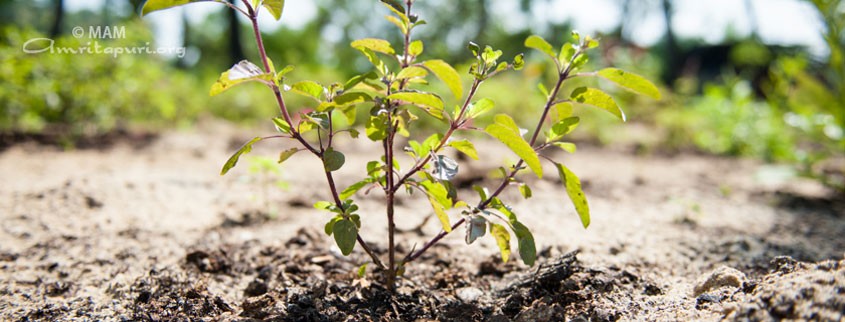Kavinte Raksha Nadinte Raksha—”protection of the sacred groves is protection of the country.” This is the name of the GreenFriends programme focused on the protection and proliferation of kavus, sacred groves, with the dual aim of helping society re-harmonize with Nature and of protecting the environment.
The tradition of the sacred grove is as old as Kerala itself. In fact, kavus are prevalent by other names throughout India—dev in Madhya Pradesh, devaraee in Maharashtra, jogmaya in Rajasthan, lakyntang in Meghalaya… And many other cultures, in the East and the West, have similar traditions. For thousands of years, the kavus in Kerala have helped maintain the balance of the ecosystem, but now kavus and the ecosystem are in danger.
This is a tragedy, as the kavus not only are a means for people to worship Nature as a manifestation of the Divine, but also a means to protect biological resources, to provide sanctuaries for flora and fauna (especially ayurvedic herbs), to provide oxygen to surrounding area and to provide deep groundwater reserves.
GreenFriends’ programme for the protection and propagation of sacred groves began in 2004. GreenFriends have held a number of seminars in various places in Kerala explaining the significance and importance of the kavus. The people who attend these seminars are then entrusted with the job of further proliferating understanding regarding the value of the groves. They also are asked to draw up action plans for establishing more sacred groves in their areas. Another goal of the programme is to catalogue the currently existing sacred groves.
By coming to sit and spend time near the sacred groves, one can begin to experience the oneness of all creation. One witnesses the ecosystem at work there, the family—the birds, lizards, insects, the ponds, trees and plants. The sacred groves are a microcosm representative of the entire creation. In them we can find our true Mother, Mother Nature.
It is difficult to conceptualize Nature as our Mother, but through the sacred groves it becomes much more easy. When we go near there, we should be peaceful and quiet—a silent witness to all we see. It should be like we were walking near a room where our grandmother is sleeping. We should be careful not to disturb anything. When we have this respectful attitude, the Mother will reveal Herself to us. Through the protection of currently existing sacred groves and through the development of new ones, we can attune ourselves with Mother Nature and this will help us human beings solve our problems.
How to Build a Sacred Grove
In essence, a sacred grove is a temple—a natural temple where the deity worshipped is the temple itself. Anyone can establish a sacred grove. Simply set off a wooded area onyour property with the intention that it not be trespassed upon, even by yourself. The sacred grove is like the sanctum sanctorum of a temple.
If necessary you may make some natural fencing around your grove by planting small shrubs, etc. Ideally it will have a pond, but it is not absolutely necessary. When starting the grove, you can also plant a few trees indicative to your area.
You may inaugurate the sacred grove with a small prayer. “It is only important that the words should come from your heart, They are the language that Nature understands.”

